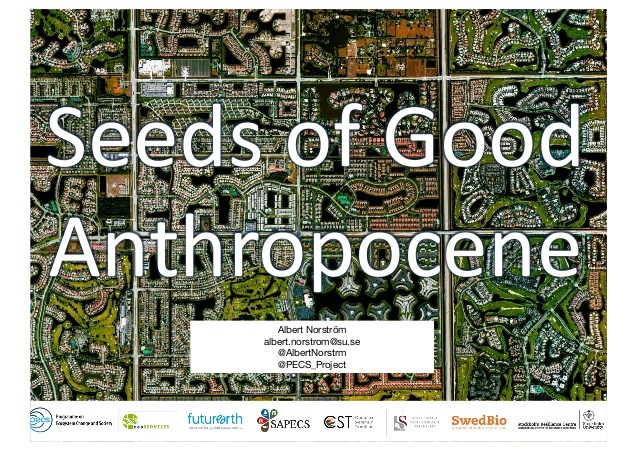Sadly, there is not much good news about the state of the Earth these days. Climate change becomes more real as it starts to bite — just ask the Australians — and there is growing awareness of and concern about the extinction crisis we are triggering.
All in all, the Anthropocene — a shorthand term for the massive and rapid human-created global ecological changes we face — is looking pretty grim.
But it doesn’t have to be this way. We do have positive options, good choices and many opportunities. Last week, I referred to the Seeds of a Good Anthropocene project. This week, I will explore what some of those seeds are and their relevance to Victoria.
The project began in 2014, and is the brainchild of academics from McGill University, the Stockholm Resilience Centre and South Africa’s Stellenbosch University. They wanted to identify and publicize “emerging innovative ideas, ways of living, and transformational projects,” the seeds that would lead to a good Anthropocene — “a more just, prosperous and ecologically diverse world.”
Their website — https://goodanthropocenes.net — notes that seeds “can be social initiatives, new technologies, economic tools or social-ecological projects, or organizations, movements or new ways of acting,” but that “they are likely not widespread nor well-known.” However, as I pointed out last week, they may grow to become important elements of the new and different future we need to create.
To date, they have collected more than 500 of these seeds, many of them in Europe and North America, but also in East Africa, Southeast Asia, parts of Latin America and elsewhere.
I will focus on the seeds from high-income countries because, after all, we have caused most of the global problems, we have the highest ecological footprints and we are the ones who need to make the greatest changes.
The seeds are grouped in 45 different tags, although each can be in several different tags. The tags include environmental issues such as climate change, water, agriculture and food, but also urban issues such as green buildings and infrastructure, parks, public spaces and urban farming.
Not surprisingly, there is also a strong emphasis on the social and cultural aspects of change, with tags for behaviour, community, governance, networks, participation and partnerships, among others. This reflects the important point made recently by Will Steffen, a leading Earth scientist working on the Anthropocene at the Stockholm Resilience Centre.
In an interview with Yale Environment 360 in December, he observed: “We need to reach a social tipping point before we reach a planetary one.”
Among the many urban seeds, we find the German city of Lüneburg’s 2030+ Participatory Urban Sustainable Futures project that involved the local university, government, citizens, NGOs and businesses in envisioning the future city as a more sustainable, livable and fair place. The project has “developed sustainability visions in 25 different thematic fields that together comprise an Atlas of Visions” and in the process promoted collaboration and a sense of community.
In Canada, there is Cities for People, a Montreal-based initiative that brings together a similar broad network of local stakeholders. They work to bring about systemic change by tapping in to “a demonstrable yearning for change and largely unmet civic appetite for involvement in local change and global governance.” Then there is Iron and Earth, “founded by Canadian oilsands workers … to train and re-train workers in Canada’s oil and gas industry to have skills in the renewable energy sector.”
These and many other seeds are very much like the work that many groups and organizations are already doing here to prepare the ground for what we call a One Planet Region; we have our own seeds in Victoria, if not yet on the seeds website — more on that next week. But we lack a comprehensive and visionary approach that brings it all together, such as in Lüneburg or Montreal.
It’s time our regional and municipal governments, higher education institutes and others provided the ground — in the form of a region-wide participatory futures process — and the fertilizer — in the form of funding and/or staff support — so that we can identify our local seeds for a good Anthropocene and help them sprout and grow.
Dr. Trevor Hancock is a retired professor and senior scholar at the University of Victoria’s School of Public Health and Social Policy.



